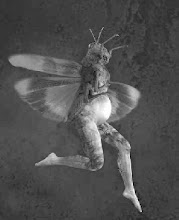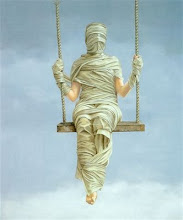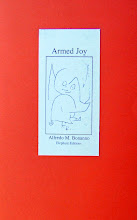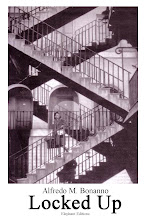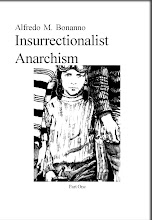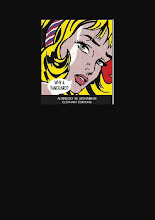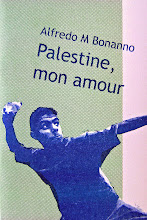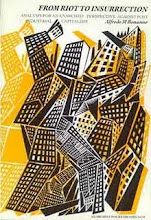INTRODUCTION
A thinker does not always supply instruments that can be used in the same way with identical fortune. His struggle with things, to discover relationships and contents, is also a struggle with time. In the great melting pot of meaning, the work of the thinker evolves, while remaining consigned to the immutable isolation of the pages of a book. New processes of creation come to light following new readings (interpretations), new contents, new factors in interpretation.
It is often our own laziness (or fear) that prevents us from reading well and courageously. We end up not seeing what we do not want to see, and one-sided criticism - that we have recourse to to help ourselves exorcise any all too clear meaning - helps us. Through weakness, one ends up complying with a reasoning of convenience, unshakable monument of supresa accademic stubborness.
Certainly, for their part, there are authors who collaborate in a precocious crystallisation of their own work. Some even provide for it themselves, drawing up reader's guides, school indications, governative patents and recognitions of other lineages. But they are the least dangerous. We know how to deal with them: they are never a surprise for the conscious reader.. It is with others, those such as Stirner, that one risks the greatest danger, that a more pressing recourse is made to support the tutelary deity (...), of the programmatory critique, custodian of the definitive interpretation.
But then, when one is aware of what one is doing, one realises that titled protection is not enough, that one is not at peace, that the meaning of the instrument has been deformed, that one has understood nothing and that it is necessary to start everything all over again.
There is no doubt that Stirner must be considered a thinker of a certain kind and that he must be placed in relation to the development of philosophy during the period in which he lived and worked. There can be no doubt that this preliminary step contributes to the terms of the problem of a reading that - more or less rigidly - must be one and not another. But it is also beyond doubt that doing so, for as much as one .... on foundations that are unanimously recognised as solid, one ends up with a bitter taste in one's mouth. The rigorous reduction of the theses of Hegelian idealism to the absurd, placed within the philosophical framework of the climate in which it was realised, limits itself to that argument and ideological clash. The same can be said for the critique of the political conceptions that are available on the market, of the forces in play as well as the theoreticians that supported them. Even the language, the method of exposition, the teutonic obstinacy, the love of biblical metaphor, the delight in aphorisms and the qualitative leap: all products of the time. But in so doing, one circumscribes just one aspect of the reading, only one sense of the instrument is perceived, another (or many others) are lost
(escape us).
The struggle of the ego is brought to within the historical framework of its interpretations, from the fathers of the church to existentialism. Another period of reading. What escapes us still continues to run ahead of us.
Neither exaltation nor insult are convenient doors to cross. The clash has never been between individualism and communism, not even when the word 'anarchist' was added to these two terms. The aesthetic glove has never fitted the iron hand of the politician. And Stirner lives the crisis of a second-sight of the dehumanisation of aesthetics and politics profoundly.
That this crisis of his has not been intelligible for over a century is not even true: here and there timid references have emerged, crushed by the obtusity of the times and necessities of the power struggle. An isolated letter - magari in the closure of a prison - did not fare testa in the face of the 'officiality' of the condemnations or false expectations, each one of which had the aim of growth of a line of 'power' that often confuses itself with the 'declared' struggle against power.
The ego is the most concrete reference to the 'totality' of the historical dimension of man, which gets lost in the 'partiality' of fictitious associative realisations. Without a shadow of hyperbole, Stirner is the most consequential theoretician of association that I know, at least of the anarchist association that is the union of the exploited no longer as metaphysical beings - fruit of an ideological elaboration - but of physical beings, with their empty stomachs and their guts separate from those of the emperor of Japan who - lucky man - ate every day. Certainly, one reaches this consideration through the deed of thought and with the instruments of that time. But this affirmation is superfluous, it is not the objective and personal limitations of Stirner that were to constitute the object of the present experience of research, but those of the possible attempts at reading that have been made and could be made. In the play of complexive relations, it is possible today to grasp meanings that are profoundly different to those that were perceived in Stirner's work in the past, not because it is a kind of book of dreams that each one interprets as he or she likes, but because some theoretrical elaborations have been completed, some concrete modifications of the relations of production have come about, making clear a passage from aesthetic intuition to political prevision.
If the destiny of man is the final liberation from exploitation,it must pass through the destruction of the chains of slavery, therefore through the ugly in order to reach the beautiful. The reading of the beautiful is always a going beyond the limits of legibility that the prevailing ideology constrains us to accept, it is an effort against power, a destructive effort. In this sense the work of art is only destructive, work where sabotage, attacking the centre that gives meaning to the so-called works of art that find a market and buyers.
It is not the ingeniousness of particular scenic skill, the genial disporsi of relations that makes the artistic product. In this sense the market of capital would be the greatest and most colossal dramatic realisation ever brought about. But the comprehension of the other side, the lightening of the possible opposite that the ideological blanket persists in covering, and also the contrary of the opposite, that which is covered by the opposite ideology (in turn). Because the whole work, in its partial and discovered aspect, has a correspondence of significance, is a unitary and total project which, if it cannot be grasped in the work of the 'politico', constrained to individuate the strategic moments of intervention, can be individuated by the artist. Only when the latter arrives at such, his product undergoes a bitter destiny: either it is declared a criminal fact (gesture, thought, act or object) or it is interpreted by the official pontificating school and, in this way, mummified: it is either deformed by the revolutionary tendency with more to say in the matter.
The Stirnerian ego exists in the totality of social reality intended materialistically as the revolutionary movement of the exploited: with the same claim of representativity, the same interests, the same outlets. On the other hand there is the pseudo-concreteness of the pseudo-totality of the ideal ego (bourgeois individualism) and the party (false representative of the revolutionary movement). Only by upturning the terms and considering man as subjct can one reach the concept of revolutionary totality that is denied by the consideration of man as object (of himself, of the ideological mechanism, of the capitalist market, of the revolutionary party, etc).
Only this interpretation must call to account a wall that has at its foundation 'San Max', certainly not one of the most brilliant of the writings of Marx and Engels and definitely among the least read. And this wall - apart from the stimuli of linguistic sagacity - has become orthodoxy for academic obtusity. 'History' comes and goes: when it is convenient the Stirnerian ego is made to leave history and therefore, as meta storico, suspected of a crime, when it is no longer convenient it is chased back again by force and accused of partial historical meaning, of fragmentation and negation of the wider significance of the development of human things.
Certainly also here, in this book, we affaniamo around marginal questions, often doors that are entered again, commonplaces redefined with vigour; but it is the necessary tribute that must be paid to the forces at play or at least so it seemed to us. In fact now, that we have all the material in front of us, at the moment of putting it together definitively, doubts are not lacking. Some things could have been avoided, but we could have run the risk of assiomatizzare. Others could have been said differently, but the conclusions would often have been almost incomprehensible: how much fear remains, for this, in our breasts? Think: to work out reasoning and come to incomprehensible conclusions! Stuff to be thrown in the wastepaper basket. Other things again have been said just as we felt they should be: that the terms of the relationship of meaning do not move fast enough to make them comprehensible before printing.
Chapter One
STIRNER'S SETTING AND PHILOSOPHICAL FORMATION
STIRNER'S SETTING AND PHILOSOPHICAL FORMATION
The Hegelian left
By traditional philosophical categorisation Stirner belongs to the Hegelian left. It is not very important to look at the reasons for this assignment that immediately render it methodologically useful. The philosophical figure, the speculative realisation and the meaning of his work both in the world of thought and political action, are enough to make such a label sufficiently valid, at least until the moment when we go into the meaning of his message today.
The Hegelian left is born of a real distinction around a concrete storiographico problem. It is not thereforesomething extrinsic or a product of cultural alchemy. The young Hegelians agreed with Strauss's interpretation and his Leben Jesu, identifying himself with the refusal to see evangelical history as authentic history and opposing himself to the Hegelian 'right' (Groeschel, Gabler and - in an early period - B. Bauer) who saw in evangelical history the history of his maximum level of authenticity. Less important is the 'centre' (Rosenkranz, Erddmann, Schaller) who considered it only partially authentic history.
But before asking oneself what in fact was the emersion of this problematic determined that was important, in the German philosophical climate of the time, it is necessary to clarify what the positions were within the Hegelian left itself. It is the political situation at the time that pushed the men who desired to modify it in the direction of a greater democratic opening, to look upon Hegel with suspicion.
Rosenkranz writes: ‘...all those who had the future of Prussia before their eyes moved away from Hegel with distrust, considering him a person whose politics were too limited and too dependent (as he himself admitted) on Prussia’.
If the situation at the time is considered irrational, the identification of rationality with the ‘harsh’ reality of the Prussian State could not fail to lead the ‘young’ Hegelian progressives to see Hegel a reactionary to be avoided. Now, it is the greater or lesser care with which these distances were taken that measure the various positions within the Hegelian left.
Following the repartition made by M. Rossi we have 1) the liberal tendency with components from the centre; 2) the individualist-anarchist tendency (from Bauer to Stirner); 3) the liberal-radical tendency (extreme-left). (2)
Here our capacity to follow Rossi’s discourse comes to an end. Further on we shall see the defects of this scholar’s critical evaluations concerning the anarchist current and in particular that of Stirner, which he considered a current of thought which, starting off from global contestation, ends up aborting into abstract individualism or aristocratical super-individuation of Engelsian memory.
Therefore Stirner represents the extreme address of the formation of the Hegelian left, not the extravagent position of a bourgeois intellectual who, in the closure of their own room, given the conditions of the total destruction of the world, but as consequent analyser of the Hegelian philosophy and in particular the universal historical construction that this brought about. Even Stirner was aware of that himself(3), though for him things were not merely accidental. Among contemporary scholars, hastily linked to the judgements of the Marxists in their critical consideration of Stirner, only M. Rossi saw himself constrained to admit: ‘...we have been unjust to Stirner, because his deduction is in any case more complete than that of Hegel...’(4) But it is a question here of no more than a note between the lines, most often these scholars do not split hairs in analysing and recognising the validity of their discourse on the misunderstood anarchist philosopher.
Certainly, anyone who considers the style of the writers of the Hegelian left, particularly Marx and Engels, but also the others, and Stirner himself, will note the often ironic and mocking journalistic style which San Max is a good example of. Unconscious response, on the one hand, to the complicated formulae, the dismay and melancholy that inevitably takes the reader of Hegel once one gets into the monumental and often cold elaborations of his system. But for these new men the problem of style is also a problem of the interlocutor, of the public to whom to address themselves, of the concrete dimension of their writing. The profession of ‘free literature’ is born with all its apparatus of alienation: intellectual work and the sale of the finished product to editors and booksellers often leads these young thinkers to verify the constriction of social and productive relations.
Feuerbach felt himself a ‘writer’ before anything else(5), Ruge and Bauer were journalists, also Marx and Engels (6), Kirkegaard, due to his strange position in the face of traditional relations with the everyday world and journalistic literature, remained fundamentally a writer and, moreover, among the most impassioned.
And these men, including the taciturn Stirner, lived in Prussia, the Prussia of Frederick II, Kant and Lessing; in Berlin, a city traditionally famous for its ironic scepticism and broadness of vision; a city that saw the spreading of its own enlightenment along with its incapacity to make democratic liberalism live alongside enlightened despotism.
If the general level of mass information was very backward (7), against that there a growing insufference was spreading in the face of governative acts of repression. In 1836 the books of the ‘Young Germany’ were prohibited and 192 sentences were pronounced, some of them death sentences. In 1837 the minister Weidig, tortured in prison, committed suicide, giving rise to a wave of disdain all over Germany. In 1838 the king of Hanover dismissed 7 professors from Gottingen university who had signed a protest against the abolition of the Constitution.
Per conto the political encyclopaedia of Rotteck and Welcker(8) was diffused, clearly inspired by the principles of the Great Revolution; the Grimm brothers organise a vast work of aid in favour of the destituted professors of Gottingen; a true proletarian movement initially of liberaliggiante inspiration is born, then, gradually, with socialist colourings, as the class struggle took more a precise form and the industrial revolution became more diffused and developed.
Therefore, growth of the proletariat and growth of the bourgeoisie. The last foolish ambitions of the feudal class disappear into national absorption. A new Weltanschauung rises from the ashes of the old ideological seclusion of the Junkers: it consists of the theoretical reflux of the rules of the capitalist game based on the principle of freedom of production and accumulation, a dominant ideology from the conception of movement and competition.
As a result of Germany’s delay in the economic and social sector, the preceding conception of the world, begot by an emerging bourgeoisie, still quite weak in the face of the persistent feudal power, had had the characteristic of being a badly turned out adaptation of rationalist ideas to traditional religious ones. So, German rationalism of the XVIII century, like the French of the XVII century, limited itself to inserting the new idea of progress into the camp of intellectual and moral development, extracting it from concrete economic and social conflict.(9)
All that led to a dualism between spirit and matter, which became clear at a time of development of the productive forces - towards the end of the XVIII century.
Fichte, Schelling and Hegel can be seen as attempts to overcome this dualism which prevents one from reaching an organic conception of the world. As Cornu has written: in their attempt to overcome the dualism between man and nature, these philosophers conceive the world as an immense organism submitted to incessant transformative action of internal forces and laws and lead the development of the world back to that of the spirit, placing the latter as principle creator and regulator of beings and things. Because in their systems the spirit includes in itself, in that which there is that is essential, the whole of reality and therefore the development of the world is explained by the self-determination of the spirit. The evolution of the world is conceived in such a way, they assign freedom as aim, which presents them as the very expression of the Divine’.(10)
The fact of having denied the ‘thing in itself’ any possibility of limitation in the pen direction of Beck, obliges Fichte to defend himself in an idealist position. The world is intended in terms of a progress of conscience, a concept that needs to attribute a particular charge to the ego: absolute freedom and unlimitedness. Constructor and guarantor of the finite, the ego becomes infinite possibility, infinite spontaneity, infinite activity and infinite freedom. It is the moment of intuition, the consoling solution that Kant had foreseen but not totally accepted. The circle of conscience finally closed in on itself. Self-conscience and reflection supplanted the ‘thing in itself’.
The Fichtian principle of the ego, as well as Schelling’s opposition, did not fail to suscitate wider dissent along the line of thought that originates in Germany from Lessing there was a wide diffusion of Spinozism. The Letters on Spinoza by Jacobi and his argument with Mendelssohn were to attract the attention of the scholars on the Spinoza theory of conscience intended as by-product (derivative) of things, exact upturning of any idealist claim. It is in this line that Herbart places himself, trying to avoid the destruction of the ‘thing in itself’, without however fully returning to the Kantian theses, and that due to the recognition assigned to the philosophy of being able to get to the bottom of all the problems of reality and nature.
The same Schleiermacher, in spite of the delays that may have been due to his interest in religion, places himself in the same line of redimensioning as the Fichtian principle of the ego.. Sentiment comes to be recognised as the interpretative key of the infinite in the finite, and religion as the manifestation of this sentiment.
But the highest rethinking of Fichte’s doctrine was carried out by Schelling.
A very obvious split was found in Fichte’s speculation: the impossibility to explain the formation of nature and the world of art. With Schelling one assists in the re-elaboration and fusion of these two concepts, divided until then: the dogmatism of Spinoza and the absolutism of Fichte. The objectivity and subjectivity presupposed by these two doctrines came to be fused in natural philosophy, which thus takes on the task of raising again the sorti of the concept of the reality of nature (and of art), somewhat compromised by Fichtian centralism. Certainly, to subjectivity lay the foundations of a science of nature in the fragmentary situation in which science found itself at the time, took on all the consequences of any metaphysical undertaking. Precisely for this reason Schelling’s philosophy did not come down to a distinction of the categories of nature, but directs its efforts in the teleological attempt to overcome quantitative requirements and spacial reality with the aim of reaching a concept of reason that manages to give order and meaning to all the necessary metaphysical presuppositions, without distorting the legitimacy of the phenomena. The air one breathes in Schelling’s system is that of the Kantian ‘thing in itself’ The Philosophy of Nature can be considered an attempt to overcome this obstacle. It was to be Hegel who repudiated the autonomy of nature, in recognising it to be insufficient to itself.From this conclussion, charged with consequences, Schelling complained although, in the last analysis, it contributed to a decisive turning in his own thought: that towards ‘positive philosophy’. But the major force of unification of philosophy, the stronger the attempt to formulate an absolute thought, was realised by Hegel.
With Hegel one assists in the instoration of a fictitious equilibrium, an equilibrium that is so apparently stable, so extremely complete, that it was able to make itsown supporter that philosophy was about to conclude itself. It is the bourgeois dream in the moment of its maximum ideological game: the impression that the definitive conquest of power was about to draw near, coincides with the disappearance of the philosophical reflection that, as one knows, is always critical businessand in moments of crisis it sharpens and develops. The same romantic leaps do not move Hegel. Metaphysical coordinator and systemizer without precedent, he starts like various otherpostkantians from the refusal of ‘thing in itself’, but without satisfying himself with Fichte’s solution, clearly pioneeristic, and of Schelling’s solution, reproving him of recognising a perfect organisation in nature. He borrows from Kant the dialectical principle of contradiction, for which criticism reveals itself denied any possible metaphysical construction. With Hegel this principle is twisted and addressed precisely to that work which Kant believed was not suitable. This work of construction is the ‘philosophy of history’. If the method is supplied to him by Kant, even indirectly, the predominant idea came to him from the mystical tradition of a certain German protestantism, excluded and banished by religious-academic officialdom. The infinite, according to Hegel, must not report itself to the finite, because it would constrain the latter to an endless progress, precisely because it is infinite. Naturally not being able to have a relationship between infinite and finite, one of the two poles must explode away. And it is the finite that is annulled by the action of the infinite thatdiscovers ramifications of itself in the finite, contributing to the ideal interpretation of the latter.Thus Hegel worked, dialectically, for the construction of rational reality. The well-founded doubts around the possibility of a metaphysical construction, advanced by Kant, are overcome by Hegel by individuating the dialectical contradiction as basis of reality.Hence, reality not being ablt to define itself ‘thing in itself’, becomes reason, in fact Hegel pushes even further forward, insisting on the identity of reality and reason, identity that realises itself in ‘rational reality’. The doorsclose before ‘having to be’, and therefore also before ‘having to be what is not’. Reality, in that it is rational, is complete and concluded, in quanto dialectical process is History.
This new philosophy of ‘need’, this absolutising doctrine, camt to find itself in open contrast with the parallel romantic currents, with the sentimental ‘starting points’ of Jacobs, with any tendency towards disgregation and fragmentation. From its intimate tendency towards fusion and reorganisation, Hegel’s philosophy finds the basis to define itself ‘science’. Of course the science of History, systematical doctrine of the historical process, elaboration of the conjuncture of historical concepts transformed into glorious synthesis. The revolutionary project and the historical realisation that was to lead to the formationof capitalism could not find a more exhaustive foundation. Once in power the bourgeoisie sits uponit, kicking away any irrational residual of medieval origin, as also any attempt to undermine their own conquest, attempt which could find origin in the very weak orgainsation of proletarian resistance.
The profound difference between the way traced by Hegel and that followed by Kant becomes evident. The latter could not rilevare any movement within the historical process too covered by the shadow of the ‘thing in itself’, hence it is said that Kant remained closed to the historical problem. In Hegel, on the other hand, this idea appears largely and at the same time, it exhausts itself manifesting its negative side: the impossibility of an opening towards uncertainty and constructivity that are characteristics of man’s will to struggle. the historic process of Hegel is still stationery at his claim of completion (perfection). In the lack of the real clash of fatti and events, everything seems to conclude itself in an enormous effort, aimed at keeping alive a ghost of concreteness. The dialectical prinsiple canconciliate any contradictyion, can transform into superior synthesis every new contradiction, but claims a sacrifice: the mutilation of reality, constrained to adapt itself to schematism. We shall see now in what way the tendency to conclusion extrinsicates itself in the form of the spirit.
Art, religion, philosph are led back to a progressive system and, above all, constructive, valid even in those cases in which it becomes necessary to have recourse to a modification of tradition. Thus art is interpreted in terms of progressive completion, like a continual reaching and overcoming determined effects, like a struggle betweensubject and object developing itself through alternating phases within society and that may be found in all the History of man. The symbolic period, the classical period, and finally the romantic one, form the description of the facts of art throughout the centuries, facts which are necessarily coming to an epilogue. It is not an adverse destiny that is obliging art towards its own end, because it is ‘daughter of time’, but a direct consequence of its ‘extrinsication’ that obliges it to flee from the present. It is time to act harmfullyon art, its influx modulates the history of the aesthetic spirit and allows us to the exact valutative position to be assumed concerning the artistic works of the past.
Something similar happened for religion. Hegel takes trouble to give us a positive development to religion, a development inserted in the turning of historical events and, therefore diretto to the conclusion. The epochs of religion, from the natural to the absolute, are progressively disposed, in one with the unwinding of the history of the spirit.
Christianity is however, for Hegel, the highest form of religion, the most complete manifestation of the relationship instored in the centuries between the finite and the absolute. In Hegel one can assist in the effort to take these conclusions to fulfilment and, at the same time, to the need to keep apart from temporality the conception of the spirit intended in creative terms. It is precisely the problem of time that causes the major scissions within his thought.
The union and the fusion of the non-being and the being constitute a concept of becoming quite separate from that chronological of time, which will make its fleeting apparation (always weithin the limits of persistence) in the Philosophy of Nature. It is always the fundamental concept of Idea that gives life to nature intended as becoming. It must have been very difficult also for Hegel to contract the appearance of nature in the essence of the Idea.The passages of the Enclopaedia that treat this problem are among the most tormented and obscure. The same disciples and then later the most fertile interpretors did not manage to overcome this authentic obstacle and at times were to contribute to making it even more arduous. The modifications of a structural character (space-temporal)are included by Hegel in his characteristic dialectical demonstration: an attitude that made Johann Wolfgang Goethe furious. ‘To want to destroy the eternal reality of natural through a sophisticated joke in bad taste does not seem to me to be worthy of a reasonable man’. (Letter to Thomas Johann Seebeck of November 28 1812).
Unfortunately Hegel’s system can lead to a resolution of the nature of the spirit, an annihilation of natural laws in the face of the spiritual ones. The heredity of the ‘thing in itself’ throws its last malefiche shadows here. It is necessary to understand how this danger does not only have metaphysical aspects, such as those underlined by Feuerbach, that is aimed at reducing the object to absolutely abstract determinations, which only end uptotally travisarlo, but also has more concrete aspects, immediately political, empirical aspects, capable of using Hegel’s philosophical formalism as a base for an ideology of exploitation.
In substance, moving two critiques, from two different starting points, one also reaches different results. The first would be the negation of a formal validityto hegelian philosophy, that is a philosophical declaration ofillogicity, on the simple basis of the reduction of the object to simple balocco of the absolute spiritacting in the empireo historical in which all contradictions resolve themselves and represent themselves.The second result would be the individuation of the positivity (deleteria) of the sameapparent negativity, when it concorre in throwing the baseis for the acceptation of the irrational. If the State is irrational (in that exploitation is irrational), seeing it as the element of an abstractly logical formalism it can be accepted because it negation would negate that formalism and would throw us into great inquietudini, hence the concretefunction of the abstract, the constructive function of the inconsistent, the reactionary function of the ideological illusion.
